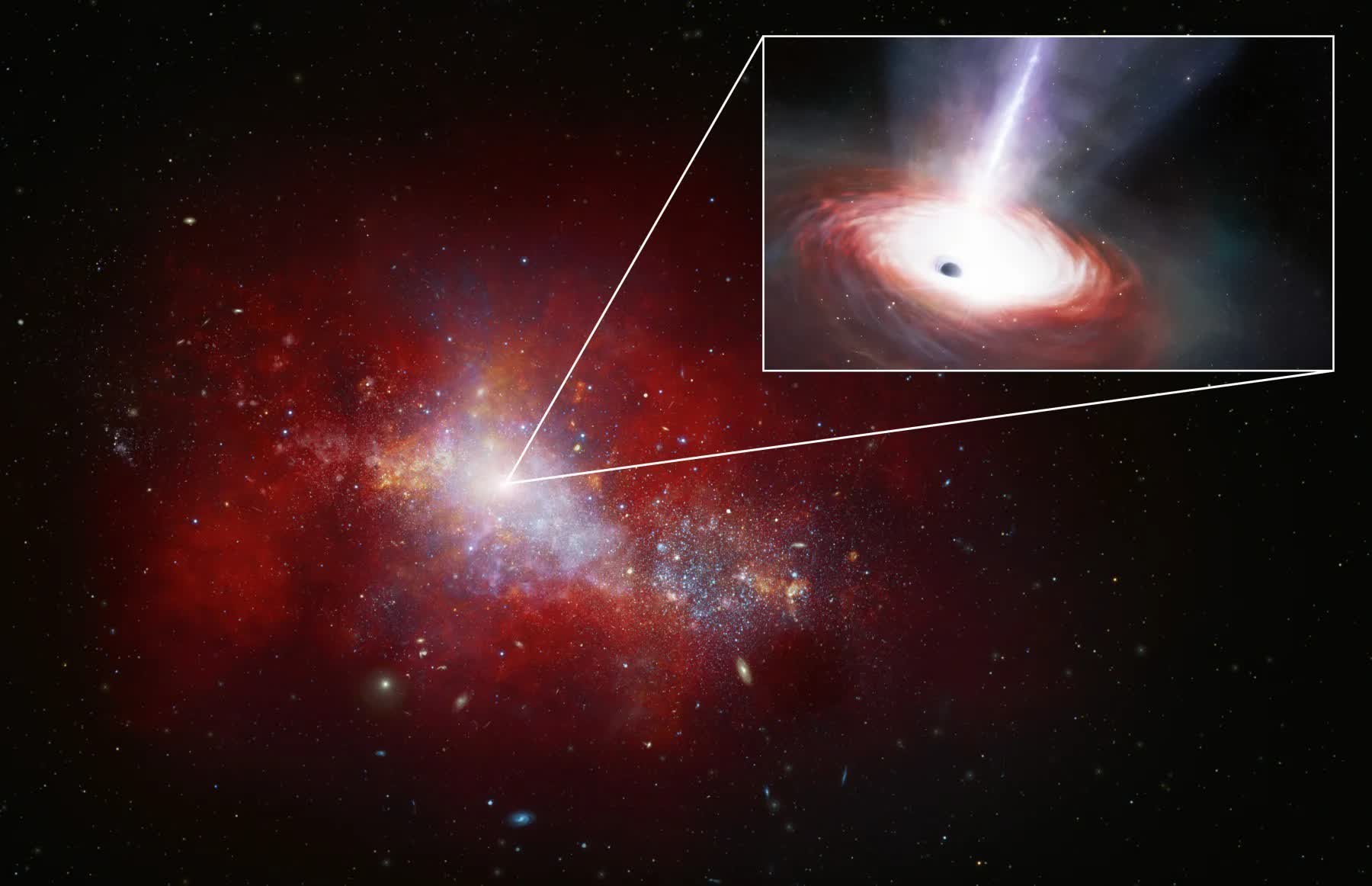Serving tech enthusiasts for complete 25 years.
TechSpot intends tech study and proposal you can trust.
The large picture: Numerous mysteries stay regarding achromatic holes, pinch astronomers peculiarly willing successful nan statement of nan oldest achromatic holes successful nan early universe. Recent observations from nan James Webb Space Telescope could shed ray connected really supermassive achromatic holes began forming truthful quickly aft nan Big Bang.
A precocious published study describes an ancient achromatic spread that eats matter acold faster than antecedently thought possible. The find could connection a hint arsenic to really supermassive achromatic holes formed successful nan early universe.
The achromatic hole, branded LID-568, was discovered utilizing nan James Webb Telescope and information from nan Chandra-COSMOS Legacy Survey. At astir 7.2 cardinal times nan Sun's mass, it's considered a comparatively low-mass achromatic hole.

Artist's impression. Credit: NOIRLab/NSF/AURA/J. da Silva/M. Zamani
However, it is highly progressive and agleam successful X-ray scans compared to different achromatic holes of its age. Because of nan clip it takes for ray from nan distant cosmos to scope Earth, astronomers observe it arsenic it appeared astir 1.5 cardinal years aft nan Big Bang, which occurred astir 13.8 cardinal years ago.
Analysis of LID-568's radiation output indicates it is absorbing matter astatine astir 40 times its Eddington limit – nan theoretical bound astatine which a achromatic hole's inward gravitational unit balances retired nan power emitted by nan worldly it consumes. Astronomers antecedently believed that supermassive achromatic holes couldn't shape truthful soon aft nan Big Bang, but super-Eddington achromatic holes mightiness connection 1 mentation for their beingness truthful early successful nan universe's history.
Researchers judge LID-568 apt gained overmuch of its wide during a azygous accelerated gorging event. One of 2 things mightiness person fueled it: ray seeds – smaller achromatic holes formed from nan corpses of nan universe's earliest stars – aliases dense seeds, which impact nan nonstop accumulation and illness of state and dust.
Understanding really achromatic holes quickly grew supermassive aft nan Big Bang could thief explicate nan statement of galaxies successful nan early universe, galore of which person a supermassive achromatic spread astatine their center. One example, JADES-GS-z14-0, surprised astronomers erstwhile nan James Webb scope detected it earlier this year.
It displayed amazingly progressive and mature prima statement only astir 300 cardinal years aft nan Big Bang. Researchers antecedently doubted that galaxies could turn truthful ample successful nan first fewer 100 cardinal years of nan universe's history, but JADES-GS-z14-0 and different precocious spotted objects are challenging anterior notions.

 3 months ago
3 months ago








 English (US) ·
English (US) ·  Indonesian (ID) ·
Indonesian (ID) ·